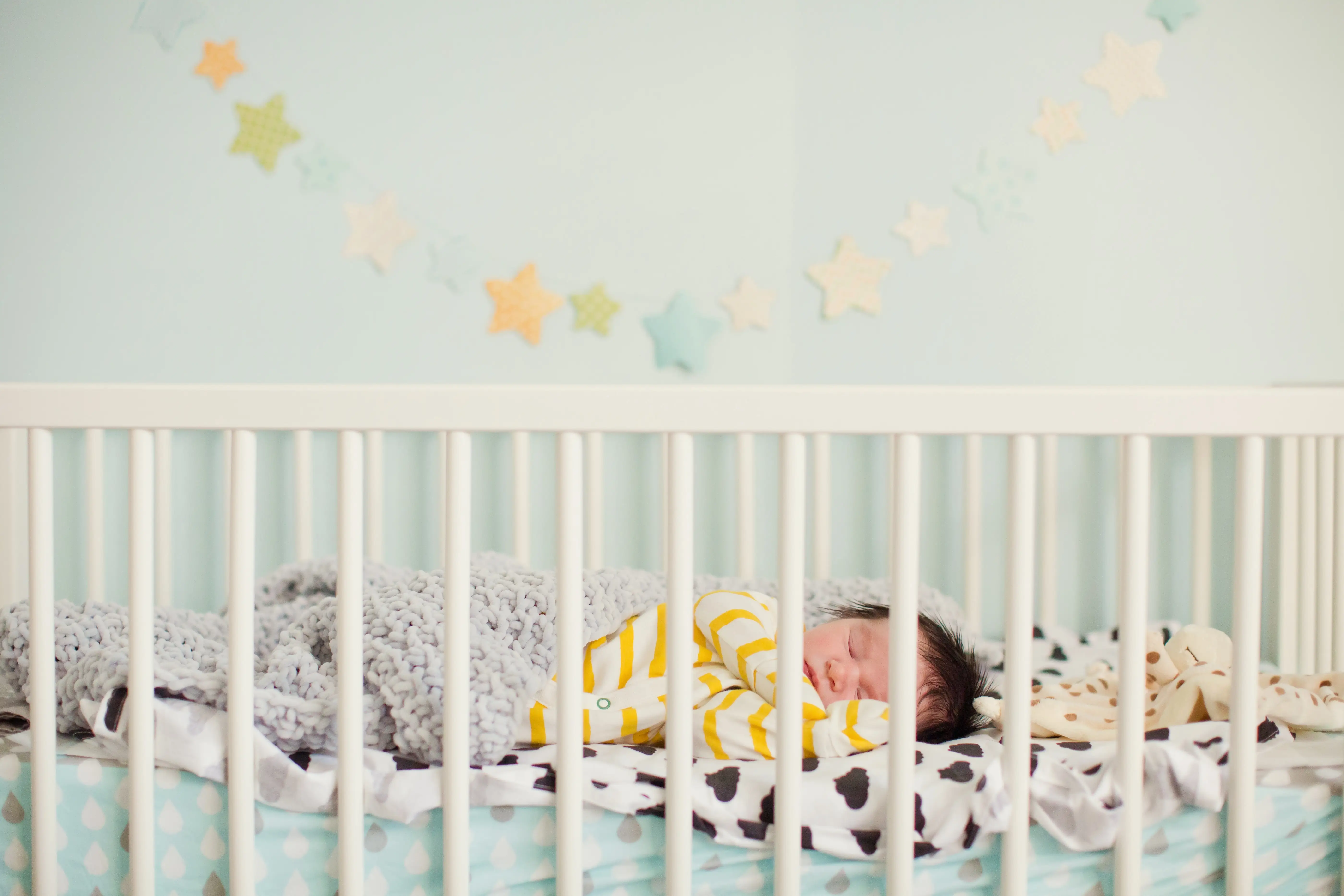Our little bees need their zzzzzz’s, but sometimes babies call the shots. One night they’ll sleep a lot, another night, not so much. We’ve all been there, and we love the peaceful feeling when they finally drift off to dreamland. A good night’s sleep leads to a better tomorrow for everyone. Rest assured, your baby’s sleep habits will change as they grow, but if you need help now, try this 3-Step Calming Routine. Follow this infant nighttime routine consistently and try out some of these baby bedtime routine tips to help keep your little one on a sleep schedule. This schedule may help babies and toddlers sleep better. From our hive to yours, sweet dreams!
Why is a Bedtime Routine Important?
A consistent baby bedtime routine can help your little one establish healthy sleep habits. Babies have yet to develop their circadian rhythm, or their internal clock, to guide them through the day. Create that sense of security in your baby’s sleep schedule by winding down 20 to 30 minutes before bedtime. Put on soothing music or read them a book before you prep them for bed, say goodnight, and leave the room. They’ll eventually know what to expect from this pattern in their evenings. It may take a few nights, but they will fall asleep if you stick to a routine.
Sleep Regressions
Sleep regression refers to when babies wake up out of their bedtime routine and show signs of an inconsistent baby sleep schedule. This may happen around 4 months or at some point during your little one’s first year. Perhaps they suddenly start waking up every few hours instead of the longer stretches you’re used to or they’re suddenly more fussy with a sudden schedule change. Not to worry—this is normal! Sleep regressions are temporary, typically lasting a week or two before fading. The important thing is to stick with the schedule! Ensuring they get enough food during the day, putting them to bed while they’re drowsy, and creating a calming atmosphere can all help with sleep regressions.
Sleep Training
Sleep training for your baby means gradually increasing your response time to your crying baby when they’re (supposed to be) sleeping. The goal of sleep training is to have your child self-soothe and fall asleep on their own. This helps teach independence in their development journey. Around four months old is when your baby’s sleep cycle stabilizes. The Cry It Out (CIO) method may be most difficult for you as you won’t be able to pick them up until the morning. It may take some adjustment for your little one to fall asleep without assistance, but they will learn to put themselves to sleep independently. The Ferber method involves checking in on your bee at certain intervals without picking them up. These check-ins can involve you briefly speaking to them to soothe them and remind them that you’re around, but the time in between intervals should gradually get longer. Try and stretch out the time you may go back to the room if your child cries or has trouble staying in bed.
Baby Sleep Schedule Basics
Wake Windows
Wake windows refer to the time periods that babies are up between naps. Getting to know your baby’s wake windows can help you organize their sleep schedule. Wake windows can differ from one day to the next, but there are general ranges of time you can expect your baby to be awake according to their age. Observing their cues for when they start to get sleepy can help you figure out a pattern for a routine.
Safe Sleep Practices
First and foremost, make sure your baby is on their back whenever they’re sleeping. If they spit up during sleep, their gag reflexes will help prevent them from choking. Ensure their sleep surface is firm and flat and keep their sleep area in the same room as yours (but not in the same bed) until they’re at least 6 months old. Loose sheets, comforters, and blankets can all be hazardous, so opt instead for sleep clothing (like a sleep sack) if you’re worried about them being cold. Always follow safe sleep for infants' guidelines to reduce the risk of sleep-related hazards.
Baby Sleep Schedule
See how many hours of sleep babies need, month by month approximately.
3-Step Calming Baby Bedtime Routine
1. Start with a Warm Bath
It’s the perfect way to create separation between “busy time” and “sleep time” while giving you a chance to bond with baby. It can work wonders to help baby unwind and prepare for a more restful sleep.
Choose a time when baby is not too tired and not too close to a feeding.
Keep the bathroom warm and draft-free, consider a space heater if needed.
Use your wrist or bath thermometer to determine if the water is just right—about 100 degrees.
Create a calming atmosphere by bringing in soothing scents of lavender and chamomile in naturally fragranced oils, balms, or sprays.
For older babies, make bath time bonding time. Sing softly, read waterproof books, massage while washing.
Gently pat baby’s skin dry and place them in enough towels for head-to-toe warmth. This calming bath can become a part of your newborn bedtime routine to signal that it’s time to wind down.
2. Follow up with a Gentle Massage
From their head to their little toes, routine touch and massage can improve sleep quality when part of a bedtime routine. It can calm your baby’s breathing, help with gas and constipation and allow them to relax and sleep longer. It also helps you both to bond while making them feel secure and ready for sleep. Check out Zarbee’s® Infant & Baby Massage article to learn how to give a massage.
3. Create a Cozy Space
A dark, quiet, and slightly cool atmosphere will set the stage for sleep. Read or sing softly, or play a soothing lullaby—here are some of our favorites: listen to lullabies.
Additional Tips to Help Your Baby Get to Sleep
Use a nightlight or stuffed animal for older babies to help with nighttime fears
It’ll help provide comfort and security, making it easier for them to fall back asleep.
Keep TVs or other distractions out of the room
Electronics can distract and interfere with their ability to settle down for the night.
Try blackout curtains or shades.
These block out sunlight and other outside lights for improved sleep quality.
Use a white noise machine
A white noise machine can help drown out traffic, household noises, or other distractions. This will help soothe your baby for uninterrupted sleep.
Use a dimly lit lamp for feedings
Bright lights during nighttime feedings can disrupt your baby’s natural sleep-wake cycle. A dimly lit lamp can be soothing without fully waking them up.




